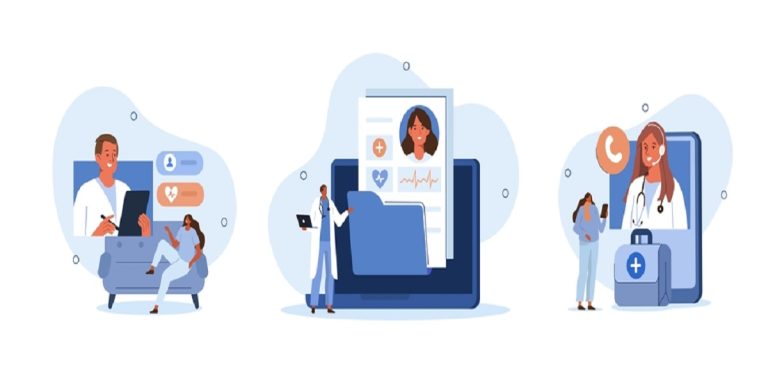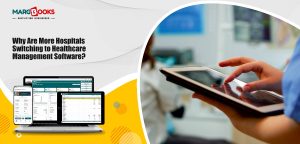India’s rural population accounts for nearly 65% of the total population, and yet, rural healthcare remains one of the most underserved sectors in the country. While government schemes and awareness programs have helped bridge some gaps, technology, especially electronic health care systems, is now playing a pivotal role in transforming rural healthcare access.
From better record-keeping to timely medicine availability, and from streamlined billing to better patient care, digital healthcare tools are rewriting the way villages and small towns receive medical support. Let’s explore how these systems are making a real difference on the ground.
What Are Electronic Health Care Systems?
In simple words, electronic health care systems refer to digital tools and platforms used by hospitals, clinics, pharmacies, and doctors to manage patient records, medical history, prescriptions, billing, and even remote consultations. These systems include everything from cloud-based hospital management software to medical store software and pharma billing software that run in the background to keep operations smooth.
When implemented correctly, these tools help eliminate errors, reduce manual workload, and most importantly, increase the reach and efficiency of healthcare services in rural areas.
The Ground Reality of Rural Healthcare
Before diving into how technology is helping, it’s important to understand the unique challenges rural India faces:
- Lack of adequate hospitals and clinics
- Shortage of qualified doctors and nurses
- Poor infrastructure and road connectivity
- Limited access to diagnostics and pharmacies
- Manual paperwork and outdated data systems
All of these contribute to delayed treatments and increased patient risk. However, this is where electronic health care systems are stepping in to revolutionise the sector.
1. Bridging the Gap Through Telemedicine
One of the most direct ways electronic systems have helped is by enabling telemedicine services. Doctors sitting in metro cities can now consult with patients in rural villages via video calls. Patient information and health history are shared through cloud platforms securely, allowing doctors to make informed decisions even from afar.
This also reduces the need for rural patients to travel long distances for specialist consultations, saving both time and money.
2. Accurate Record-Keeping and Patient Tracking
Gone are the days of lost files and illegible prescriptions. With digital patient records, rural clinics can now:
- Maintain a centralised database of patient history
- Track immunisation schedules and chronic illness treatments
- Reduce errors due to handwriting or manual data entry
- Access patient files instantly across locations
Systems such as MargBooks are empowering small healthcare centres and pharmacies with easy-to-use, affordable software solutions for this purpose. It supports digital records, billing, and inventory, ideal for rural setups that are just beginning their digital journey.
3. Empowering Pharmacies with Medical Store Software
Many rural areas rely heavily on local medical shops for their healthcare needs. Implementing medical store software has brought a significant change in how these stores function.
With such software in place, store owners can:
- Track medicine stock and expiry dates
- Receive low-stock alerts and auto-generate purchase orders
- Avoid counterfeit medicines through authenticated supply chains
- Digitally store prescriptions for repeated purchase validation
This not only increase business efficiency but also improves healthcare quality by ensuring the right medicine reaches the right person at the right time.
4. Smooth Billing and Regulatory Compliance
In the past, paper-based billing often led to disputes, tax issues, and poor record maintenance. Thanks to pharma billing software, rural pharmacies and clinics can now:
- Generate GST-compliant invoices
- Manage daily sales and returns
- Track financial performance over time
- Submit accurate reports during audits
Solutions, including MargBooks, simplify all these functions and more, even for those without prior digital experience. It brings everything under one roof, with easy-to-navigate dashboards and language support, which is especially useful in semi-literate regions.
5. Government Integration and E-Health Cards
Under national programs such as Ayushman Bharat, many rural patients are now being issued digital health IDs and e-health cards. Electronic systems enable instant access to a person’s treatment history across hospitals and ensure cashless transactions where applicable.
Hospitals and clinics using compatible software platforms can easily integrate with these systems, making healthcare more inclusive and streamlined.
The Road Ahead: Challenges and Opportunities
While the progress is promising, the adoption of electronic health care systems in rural India is not without challenges. Internet connectivity, electricity, lack of tech awareness, and training gaps still pose barriers. However, with government support and the rise of affordable tools like MargBooks, we are moving in the right direction.
What’s Needed:
- More training for rural healthcare workers
- Affordable hardware and software bundling
- Awareness drives in local languages
- Stronger mobile networks and data access
Final Thoughts
The digital revolution in healthcare is not just about big hospitals in cities; it’s also about the last-mile access in villages. Electronic health care systems are playing a transformative role in bringing quality medical services to rural India. Whether it’s through medical store software, pharma billing software, or a user-friendly platform, MargBooks, technology is proving to be a great equaliser.
We are witnessing the beginning of a future where even a small village clinic can offer world-class care, powered by nothing but a laptop, good software, and a reliable internet connection.



